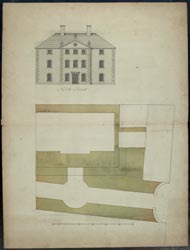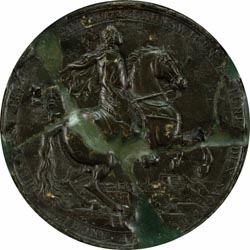Core Conservation
Production of Surrogates
LHSA produces surrogates in order that access to an original item, and the risk of damage associated with access, may be reduced. A surrogate can also be used for display where the conditions are not suitable for the original. Wherever possible, a high quality surrogate is produced to recognised standards in order that it may also serve as an additional means of long-term preservation of the informational content of the original item. Priorities for surrogacy are those items that are of particular historic significance or in such poor condition that the informational content is at risk.
LHSA often uses digital images in TIF format as surrogates and these are produced in-house using our digital reprographics equipment or by a commercial company as appropriate. The images and their metadata are stored in a database for access. Because LHSA is yet to establish a trusted digital repository, these images are not relied on as a means of long-term preservation of the informational content of an original item. For this purpose, a master copy preservation microfilm is produced, and a working microfilm created at the same time to serve as the surrogate. The digital images and microfilm for surrogacy are often used in collaboration to best meet the preservation and access needs of a particular collection item.
Where a surrogate copy is produced, the work undertaken is documented and appropriate storage for both the original and the surrogate is provided. The LHSA catalogue is also amended to indicate where a surrogate is available for consultation.
Individual examples of digital surrogacy include facsimiles created for Charters of the Royal Infirmary of Edinburgh (RIE) and the Royal Edinburgh Hospital. These have been used for open display and reproduced in poster format providing background to the hospitals' histories.
Royal Infirmary of Edinburgh Charter poster
Royal Edinburgh Hospital Charter poster
Digital surrogates have also been produced on a series level, for example RIE and Associated Hospitals case notes held in microfilm copy only. In this instance, the digital surrogate is used for access and an additional preservation microfilm produced at the same time to secure the long-term preservation of the informational content of these records. This work is detailed in the case study below.
Case study: background
During the 1960s and 1970s NHS hospital records committees, chaired by senior doctors, frequently chose to microfilm series of case notes rather than retaining the originals, which were subsequently destroyed. A number of these microfilms have been accessioned and due to the poor film quality of the originals are at risk of deterioration.
Case study: treatment
Work was carried out over the period 2000-2007. After a careful search of services offered and cost comparisons, Transmedia Technology Limited (TMT), a Swansea-based company, was selected to carry out the work. Original microfilms were transferred to and from TMT by courier. The original microfilm was washed and the spool replaced. A microfilm copy was produced and the film scanned at 300dpi, with the images saved as multiple TIFs. A master and a copy version of these images was saved to CD. The images were scanned by TMT using PixEdit software. On return, the image quality and the labelling of the copies was assessed and, once deemed satisfactory, TMT was instructed to remove all copies from their systems. All work was fully documented.
Master copies of the original microfilm and the CDs are boxed and stored in Edinburgh University Main Library. Microfilm and CD copies have been boxed and stored off site.
Case study: conclusion
Through services purchased from TMT, the original microfilm series has been preserved and surrogates produced to aid future access. Treatment of the remainder of the collection of case notes in microfilm version only is ongoing as is an appraisal of LHSA’s digital assets and provision of a trusted digital repository.
 |
 |
Designed by the Learning Technology Section, © The University of Edinburgh

